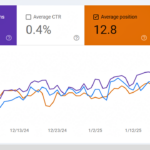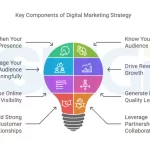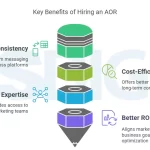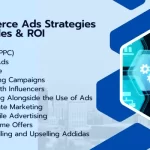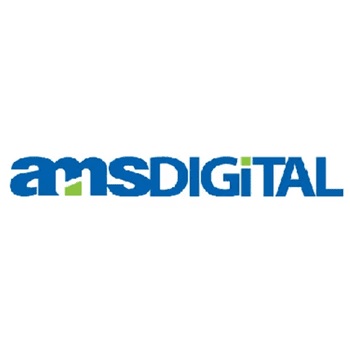When building an eCommerce marketing budget, marketers must strike a fine line between getting the most value for their money and covering all channels appropriately.
Here’s a step-by-step guide to creating a marketing budget with the most efficient digital marketing company in India
1. Understanding Your Business and Business Goals
- Why It’s Important: Marketing budgets need to be compatible with business objectives for the money spent to be effective.
- Steps: Have particular objectives, for example, sales, traffic to the website, and customer loyalty.
Sort depending on local or national goals in the short run and/or global goals in the long run.
2. Analyze Historical Data
- Why It’s Important: History is a how-to-do and a how-not-to-do guide that gives information on certain effective and ineffective strategies.
- Steps: Evaluate past approaches to find out which ones provided the highest return on investment.
Determine seasonality or times when sales are raised to budget accordingly.
3. II: Calculate Your Total Marketing Dollars
- Why It’s Important: The pre-conditions translate to the need to establish a clear base to avoid ambiguity concerning the direction and distribution of resources.
- Steps: Wherever possible, express the budget for the turnover, as a percentage.
Marketing costs for small businesses make up 7-12% of a business’s revenue.
Flexible depending on the growth stage: for example, startups are likely to spend more actively.
4. Split the Budget According to the Channel
- Why It’s Important: It consolidates efficiency and effectiveness in the use of available resources by directing them where they can do the most good.
- Steps: Identify key channels: Organic search engine optimization, pay-per-click, social network advertising, email marketing, influencer marketing and so on.
Yes, focus on the high ROI channels but do not eliminate any budget for testing.
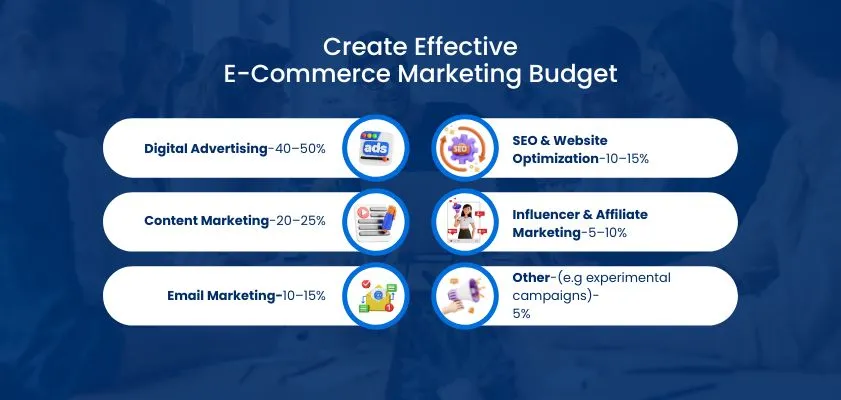 Example Allocation
Example Allocation
- Paid Advertising (e.g., Google Ads, Facebook Ads): 40–50%
- Content Marketing (e.g., blogs, videos): 20–25%
- Email Marketing: 10–15%
- SEO and Website Optimization: 10–15%
- Influencer and Affiliate Marketing: 5–10%
- Other (e.g., experimental campaigns): 5%
5. Buy Funds For Tools and Platforms
- Why It’s Important: Technology enhances productivity and minimizes cost dependency on the scale of the organization.
- Steps: Invest in professional analytical tools, customer relationship management systems, electronic mail marketing, and automation tools.
Allocate funds for platform-specific advertising costs, such as Facebook Ad Account, and Google Shopping.
6. Factor in Creative Costs
- Why It’s Important: Despite all the debate around creatives in display advertising, quality creatives keep audiences engaged and lead to conversions.
- Steps: Designate separate dollars for things such as graphic designing and creating a video or simple and clear content writing.
Always ensure that you set aside a good amount of money for the least frequent updates to the creatives to avoid shocking the audience.
7. Explain Testing and Optimization
- Why It’s Important: The current improvement results in an improved ROI.
- Steps: Allow for 10-15% of your budget for ongoing testing and incremental refinement.
It is also important to assign money for retargeting specific kinds of campaigns based on the received information.
8. Plan for Seasonality
- Why It’s Important: The volume of ads can be influenced by the necessity for more frequent spending in some periods.
- Steps: Invest more of your efforts in particular periods that are most popular such as Black Friday, Cyber Monday, or holiday sales.
It reduces during slow months and only uses organic Marketing and advertising.
9. Monitor and Adjust Regularly
- Why It’s Important: It is also possible for market trends as well as the performance of the campaign to change.
- Steps: Make sure to use the analytics to monitor performance indicators like return on investment, click-through rate, and of course conversion rates.
As required ensure reallocation of funds towards the high performers and channels that you are targeting.
10. Include a Contingency Fund
- Why It’s Important: Some additional positive and/or negative conditions may occur.
- Steps: Savings also should take 5-10% of your budget for contingencies or quick growth prospects.
Pro Tips for Success
- Benchmark Costs: To set correct expectations, overview approximately average costs for your business and the kinds of channels you plan to use.
- Focus on ROI, Not Just Spend: Both public and private entities should always link spending to results.
- Iterate Quickly: Be flexible making adjustments on how money is spent depending on results.
- Think Long-Term: Emphasize branding and customer retention as a recipe for long-run business development.
Evaluating your overall eCommerce marketing budget and making proactive adjustments to it will help you create a financial plan that helps your business grow and makes your marketing more efficient. Tying up with a digital marketing company Delhi makes your task easier and smoother.




